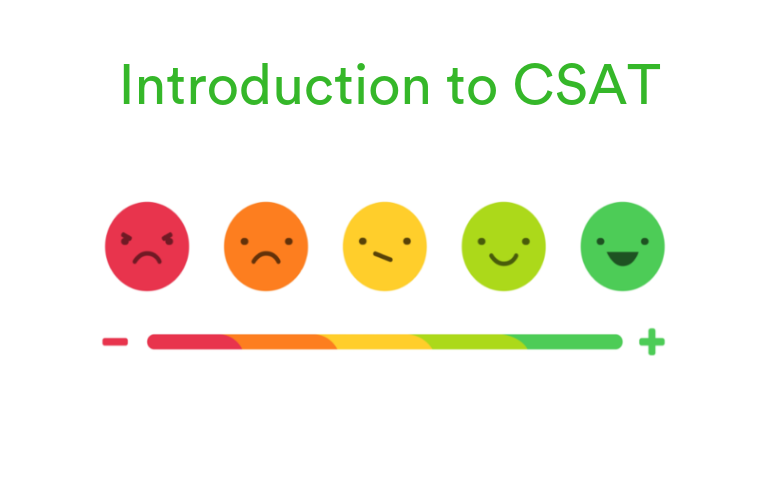
What is Customer Satisfaction?

If you've ever purchased anything, you've likely come across the Customer Satisfaction Score. It's everywhere, from online stores to airports to dentists' offices. But do you know how to harness this simple measure to improve your business?
What is Customer Satisfaction Score?
The Customer Satisfaction Score is the most straightforward measure of customer satisfaction. Customer satisfaction is calculated by asking customers a question, along the lines of "How satisfied were you with your experience today?" Responses are collected on a scale, usually 1-3, 1-5 or 1-10. The final CSAT score can be calculated using several different methods. If used correctly, collecting your customer satisfaction can help you identify key areas where your customers are less than satisfied. From here, you can make improvements accordingly. This is key to long-term customer retention and ensuring that your customers are happy with your service.
In order to get the best possible insights from your customer feedback survey, it's important to understand what it does and doesn't measure. Because of the nature of the customer satisfaction question - which asks about immediate satisfaction - responses are likely to indicate sentiment towards the customer's most recent interaction with your brand or service. This is not necessarily a disadvantage, as it means you can gauge sentiment towards individual touch points throughout the customer life cycle. However, it also means that customer satisfaction cannot generally be used to infer broader attitudes toward your brand or the customer's experience.
How should I use Customer Satisfaction?
A key advantage of customer satisfaction is its simplicity. The rating scale can be modified to suit your particular business needs, as can the question. For instance, you can ask how satisfied a customer was with their overall experience, or you can ask them about something more specific. For instance, a hotel might ask their customers how satisfied they were with their stay. However, they could also ask how satisfied they were with their room, the food, the spa, or the service. These more granular questions help to reveal if there are any specific aspects which are less satisfying than the others. For this reason, it's advantageous to ask customers to rate their overall satisfaction, as well as their satisfaction with multiple attributes. Otherwise, you will not know what changes you should make to increase customer satisfaction.
This illustrates how one of customer satisfaction's big advantages - its simplicity - is also one of its big disadvantages. In isolation, one customer satisfaction score tells you very little about how you're doing. It is most useful when you can differentiate between different aspects of your product or service, thus allowing you to make improvements. It can also be useful to track your customer satisfaction score over time, or against industry benchmarks. Customer satisfaction is ultimately most useful as a comparative measure. When used well, it allows you to use your customers' feedback to keep them coming back for more!




